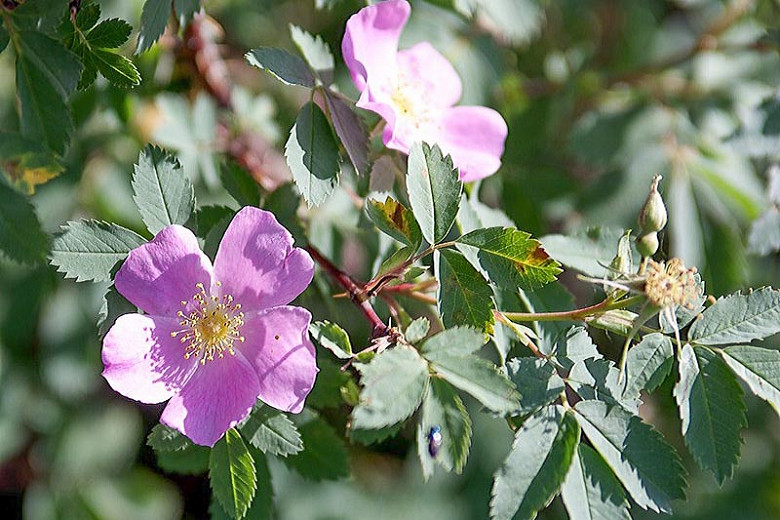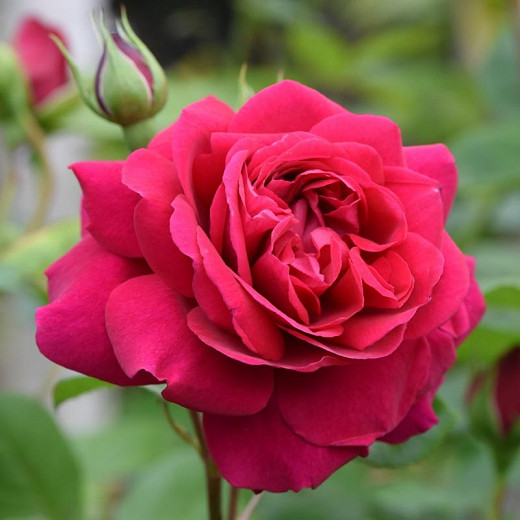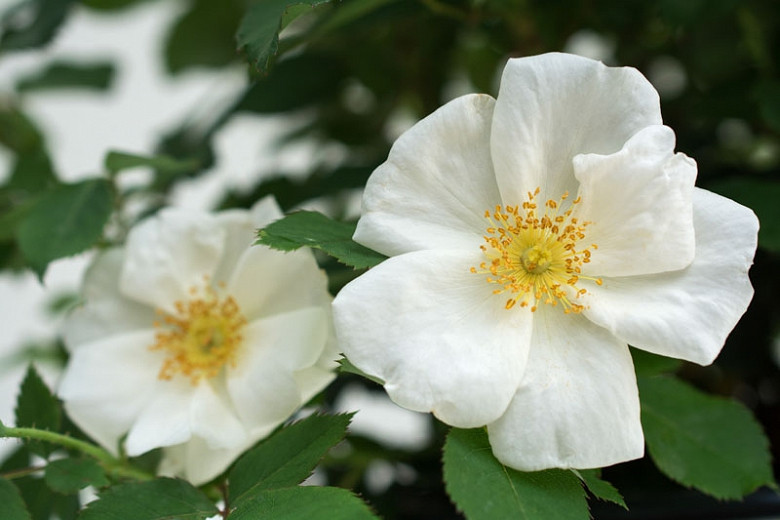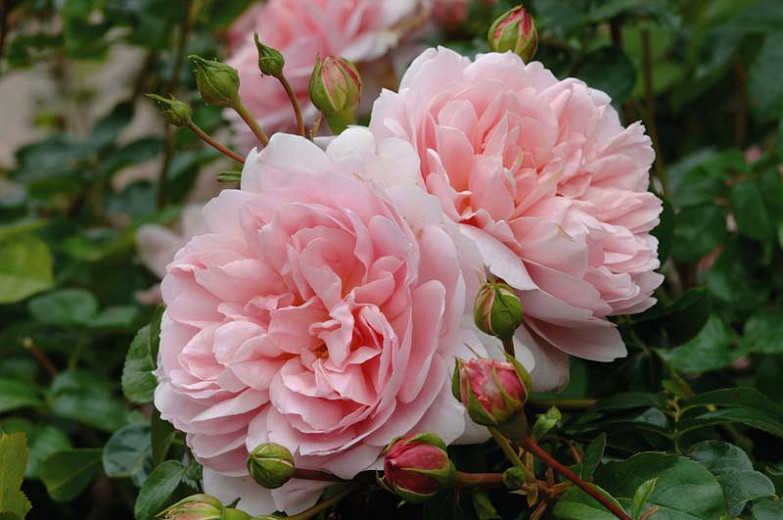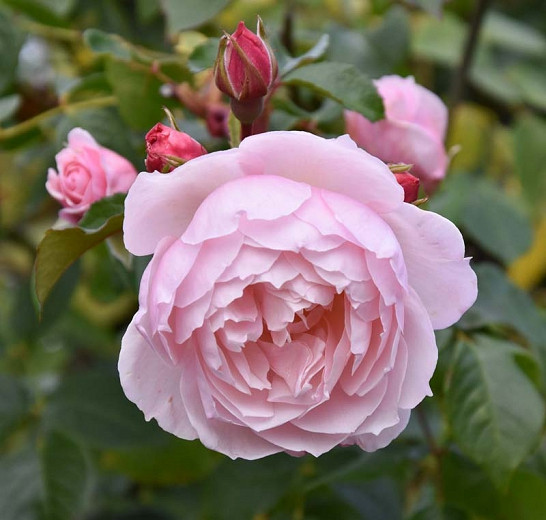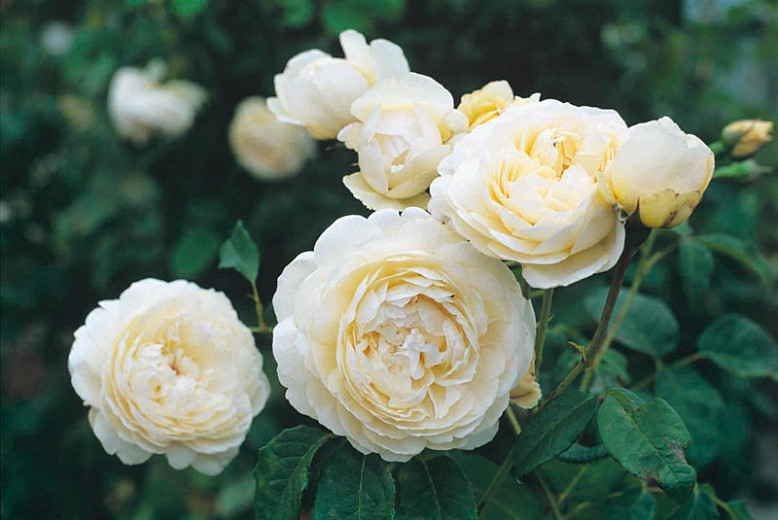Rosa woodsii (Western Wild Rose)
Fast-growing and extremely cold hardy, Rosa woodsii (Western Wild Rose) is an upright, deciduous, rhizomatous shrub with attractive, deep green pinnately compound leaves divided into 5-9 finely toothed leaflets. In spring, its new canes emerge red and are lined with prickles on their lower portions. In late spring to mid-summer, a profusion of very fragrant, single, pink to lilac-pink, or lavender flowers, up to 4 in. across (10 cm), are borne in small clusters. The flowers are attractive to bees and other pollinators. They are followed by abundant fleshy, red, round, or pear-shaped hips that generally persist on the bush throughout the winter. The hips are a source of vitamin C and are dried for use in flavoring teas, jellies, fruitcakes, and puddings. Many birds and mammals feast on them. Rosa woodsii produces flowers and fruits at about 2-5 years of age. Good crops are usually produced every 2 years. Long-lived, Western Wild Rose sometimes forms nearly impenetrable thickets thanks to its shallow, frequently branching fibrous roots. It is effective in erosion control, but can also be used as an ornamental near homes to attract birds and other wildlife.
- Grows up to 3-6 ft. tall and wide (90-180 cm). Will spread freely.
- Best grown in full sun or light shade, in moderately fertile, well-drained clay loam, sandy loam, or sandy soils. Tends to favor moist, well-drained soils but is drought tolerant once established.
- Perfect for cottage gardens, wildflower meadows, and foundation plantings.
- Keep an eye out for fungal issues.
- Propagated by stem cuttings or division of rootstock. Rose seeds should be taken from the hips as soon as ripe and planted in the open or stratified before planting.
- Widely distributed over western North America, from Ontario and Manitoba, Wisconsin, Minnesota, and Iowa, south to Texas and northern Mexico, west to California and Alaska through every other western state and province.
Requirements
| Hardiness | 3 – 8 |
|---|---|
| Plant Type | Roses, Shrubs |
| Plant Family | Rosa – Shrub Roses, Rosa – Roses |
| Exposure | Full Sun, Partial Sun |
| Season of Interest | Spring (Late)Summer (Early,Mid)FallWinter |
| Height | 3' – 6' (90cm – 180cm) |
| Spread | 3' – 6' (90cm – 180cm) |
| Spacing | 72″ (180cm) |
| Water Needs | Average |
| Maintenance | Average |
| Soil Type | Clay, Loam, Sand |
| Soil pH | Acid, Alkaline, Neutral |
| Soil Drainage | Moist but Well-Drained, Well-Drained |
| Characteristics | Fragrant, Showy, Fruit & Berries |
| Native Plants | United States, Alaska, California, Iowa, Kansas, Minnesota, Nebraska, North Dakota, South Dakota, Wisconsin, Pacific Northwest, Idaho, Oregon, Washington, Rocky Mountains, Colorado, Montana, Utah, Wyoming, Southwest, Nevada, Arizona, New Mexico, Oklahoma, Texas |
| Tolerance | Drought |
| Attracts | Bees |
| Garden Uses | Beds and Borders |
| Garden Styles | Informal and Cottage, Prairie and Meadow |


